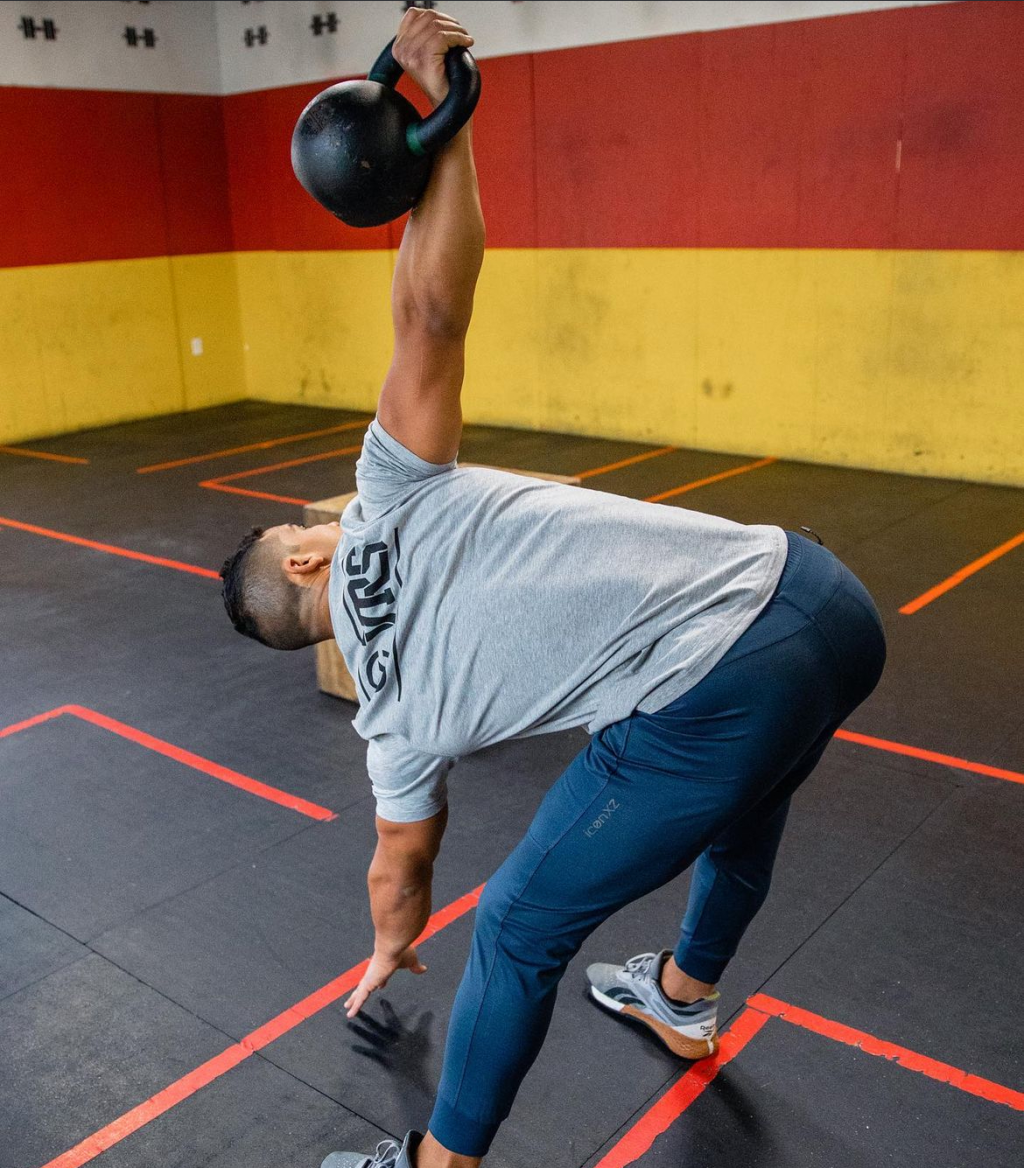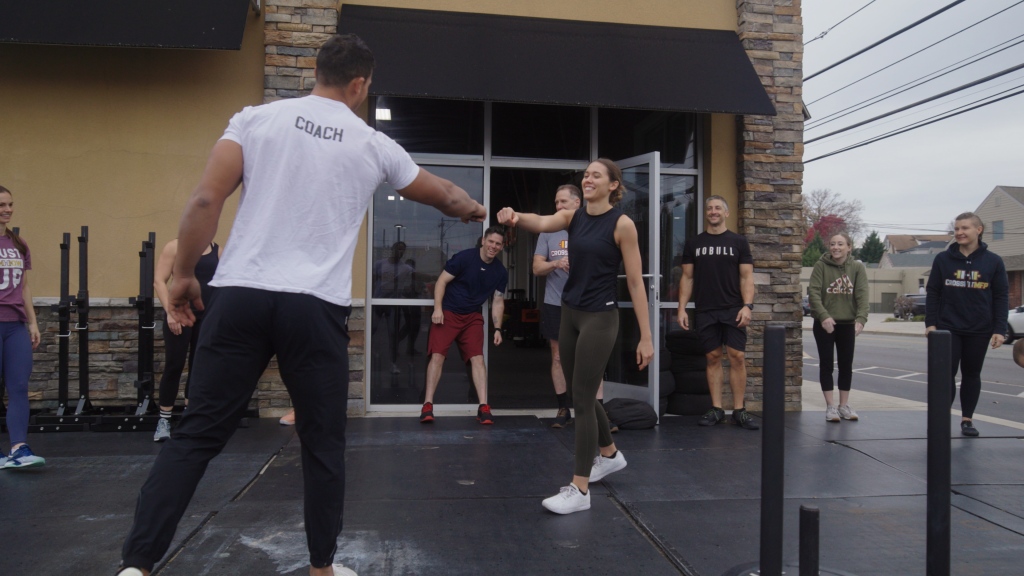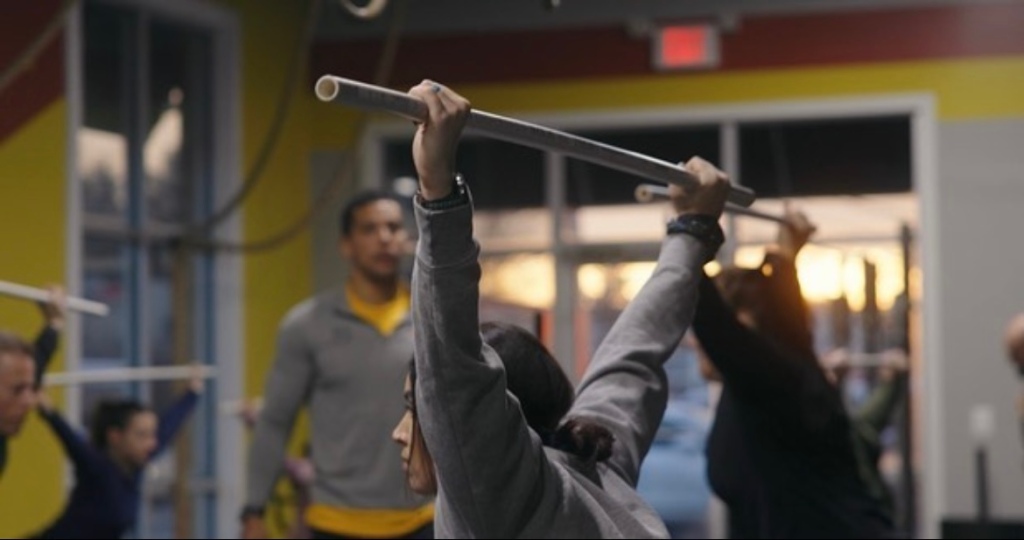We haven’t talked about Science in a while…
In Exercise Science/Kinesiology, we are taught about the magnificent structure of the human body. From the biological (cellular), and physiological (process), to the biomechanics (structure and function) of how humans are designed, there is truly an infinite potential for how we are designed to live, move and thrive.
With that said, it’s essential to be open-minded regarding how we can develop our bodies. When referring to biomechanics, aka how our musculoskeletal system functions, we do have a general set of ways with how our human body is designed to operate efficiently, effectively, and safely. Biomechanics uses concepts from physics and anatomy to provide a vast range of understanding of movement. Here are some basic examples:
- Finding the most efficient angle for aligning the hips and shoulders when performing a deadlift
- Adjusting the stance (width of feet/hips) for someone to perform a deep squat
- Performing a safe push-up or pull-up by making sure the elbows moving in a specific range of motion

When coaching movement, understanding the landmarks of the feet and hands are vital when assessing biomechanics.
I believe the true value of biomechanics is applying it to the human body as a whole unit through movement (aka “Functional Movement“). In addition, our bodies have this magnificent layer of tissue called facia that connects the entire musculoskeletal system. This system of fascia in itself has been studied to hold infinite potential when it comes to movement expression, but we will have to save that for another article.
You may be wondering where I am going with this. Imagine in an ideal world, we would feel that when we move (think of examples above), everything is symmetrical. We are always creating an equal amount of force, torque, stability, and range throughout the entire body. However, this is not the case by any means. Most individuals go through their daily lives without having any sense of mindfulness around this. In many cases, our bodies decide to respond negatively, especially if the individual has a history of intense physical activity, or even worse, inactivity. For me, I learned the hard way about the importance of valuing slicing the body, so that you can eventually spice the body.
*For reference, ”Spice” means being strong, awesome and resilient!
My Story of Learning How to Slice and Spice
My obsession with biomechanical symmetry goes way back. Similar to why I began to focus on my feet (see article), I began to become more mindful and curious about my total physical structure because of my approach to physical longevity and healthspan. I was having significant chronic compensation issues in my ankle, knees, hips, and back due to a long-term knee injury. In addition, I was training at the intensity of a competitive CrossFit athlete.
I was starting to become curious to explore new ways of how to train the body. I was ready for new opportunities and education in learning about the infinite potential of human movement. During this journey, I became intrigued to apply the concept of Unilateral exercises in hopes of improving my overall strength, performance, and quality of life.

A Unilateral Exercise at the 2017 CrossFit Regionals
What is a Unilateral Exercise?
In simplest terms, unilateral exercises cut the body in half. A general exercise that may come to mind is a lunge (step one leg back, drop the knee to the ground, then stand). Every time you walk up the stairs you perform a series of single-leg (unilateral) pushes. These are basic examples, however, unilateral training goes far beyond how most have been taught. Unfortunately, one of the downsides with the CrossFit methodology (at least during my early years) was the lack of unilateral exercises, which was a key factor in my curiosity. I was beginning to change my perspective on how exercises could be applied, specifically unilateral ones.
During the years 2015-2016, unilateral exercises were trending within the fitness communities. A former CrossFit games athlete, Marcus Filly, created a large following (Functional Bodybuilding) due to his similar mindset to mine, which was being curious about other methods of training. Now for the record, in the Strength and Conditioning and Physical Therapy worlds, unilateral concepts are a norm. However, it was clear that there was a universal shift in the evolution of all movement-based worlds of how unilateral exercises could be the make or break to performance and longevity.
In 2016 I was fluctuating in my career opportunities. Besides being a Lululemon educator to the moms of the main line, I took an opportunity to work for a program called “Thrive.” The methods and principles of the program were developed by Strength and Conditioning Coach Michael Boyle, Owner of MBSC in Boston Massachusetts. His protocols are used for sports performance (mostly Hockey) and general population purposes. One of his unique approaches to his method is that a majority of his exercises are unilaterally based.
Mike Boyle is one of the more well-known performance specialists in the country. I was able to understand why he was valued in the performance community. I was consistently integrating this methodology in my unique way. In addition to expanding my knowledge, I was noticing a profound shift in my physical abilities as well.
- The downside to Mike Boyle is his dogmatic approach to his methods in comparison to others. True leaders in the industry are those who are the most curious to learn from other methods, versus speaking false truth without any practical experience. This is my own opinion of course.
Interestingly enough, my classes and textbooks in exercise science were not providing the knowledge that I was exploring. As I was finishing my degree circa 2017, I decided to do an Internship with Villanova Strength and Conditioning in hopes of diversifying my knowledge. Training athletes is in my wheelhouse and something I always felt connected to and comfortable with. This would be my first time showcasing my skills at a collegiate level. One of the unique aspects of experiencing Division 1AA strength and conditioning is the use of exercise progressions. From the variety of implements, methods, and resources, I was able to continue to add to my toolbox. I was also formulating ways of how I could offer CrossFit-based workouts mixed with unilateral methods to some of the athletes. In addition to training athletes, I was creating new connections with the football staff through my “coaches noon class.” I was taking the staff through a unilateral/CrossFit-based workout, and from afar I heard one particular phrase I never forgot. The head strength coach noticed what I was coaching, and yelled “There you go, Cut ’em in Half!”. For some reason, this phrase became a mantra in my approach and value for what I was creating. My unique approach was becoming noticed!

Creating My Own Model: #GetMadFit #CutEmInHalf
I began creating my model of how I thought movement and fitness would blend. I was becoming a scientist at taking the best from all worlds and mashing them into my formula of M.A.D Fitness and Performance, #GetMadFit. As this personal training business progressed into CrossFit MFP, my business for now 6 years, my mindset and methods continue to grow and evolve with curiosity. MFP creates a unique blend of many frameworks for fitness, performance, and longevity with a CrossFit-biased approach. In addition, I have always brought in my mindfulness framework, as I have preached about quality > quantity and becoming more aware of your body through movement. However, the one concept that has continued to stick is my value and love for unilateral development. I can confidently say that MFP has gained a reputation for using unilateral concepts progressively and with intent. Sometimes we plug and play, but there is ALWAYS a “method to the MADness” as I say.
Why Incorporate Unilateral Exercises?
Enough of the storytime. Let’s get down to the business of why you should take these concepts seriously. The more I continue to implement and discover new ways of training the body unilaterally, I am starting to understand this potential towards a Wholebeing approach to health span and lifespan.
- Structural Balance: Unilateral exercises require you to stabilize and strengthen one side. The common sense idea here is that if you begin to equal the capabilities of both sides of your body, then the whole structure improves. Typically in the physical therapy world, unilateral exercises are essential to come back from injuries. Especially since injuries happen to one side of the body, and then the other half begins to compensate. Compensation, however, is inevitable even without a history of injury. These exercises for me, are more so considered Prehab to become more resilient to injuries or avoid complications within the physical body. PT’s love MFP for the way we program for our members! With that said, I also believe these are vital to overcome plateaus with strength, and mobility, and becoming more aware of your physical capabilities.

Good Ol’ home training days with client Lindsey Levey!
- Mindfulness: Generally speaking, you become much more aware of your body when you slice and spice. You will notice the intricacies of your movement patterns. You will find the restrictions, stiffness, weaknesses, or vice versa! Some of the best unilateral exercises (referred to below) require you to not just become aware of a specific movement pattern (for example vertical overhead push), but more importantly, stabilize the entire midline at the same time! Once I start throwing in the importance of the “core” getting significantly stronger through a unilateral exercise, then I start to get my clientele’s attention to my method, and their movement! With that said, I still see people who just “go through the motions,” even with intently programmed unilateral exercises. You can make these exercises much more impactful when more “mental” effort is incorporated!

The 1/2 kneeling position requires mindfulness with stabilizing the hips and midline
- Neuroplasticity: With more awareness, comes more thinking. In my opinion, this is where the true magic happens. For a super duper quick brain tip you may already know, our brain is structured into right and left hemispheres. Each has very unique qualities and functions. When you do unilateral exercises (especially crossbody), your brain is working extra to open and rewire neurons versus other forms of neuroplasticity. The more repetition of these behaviors, the better these neurons maintain their placement and/or expand more! More importantly, if you dive deep into the library of unilateral work, you can begin to enhance the signal strength between the neurons; and all of this just through movement that is challenging you to work one side of your body! Maybe, just maybe, we are looking at a super boost to exercise as a prevention of neurological diseases. I have my theories of course…

Double your Neuroplasticiy with exploring the floor!
Expanding Your Unilateral Toolbox: I would recommend starting simple and slow. Choose basic unilateral exercises and do them with TEMPO and control (see tempo article). With all things considered, there are infinite possibilities for incorporating methods such as primal flows, coiling, and kettlebell flows due to other rhythmic patterns, and movement variability. Here are some of my go-to’s:
- Upper Body: ½ Kneeling Pressing, Single Arm Ring Row/Hang, Bird Dog Rows, Single Arm Bridge Press.
- Lower Body: Deep Box Step Up, Knee Over Toe Split Squat, Single Leg Crossbody Deadlift, Cossack Squats.
- Other Miscellaneous: Turkish Get Up, Side Plank Variations (my all-time favorite), Windmills, Pallof Press, Suitcase Carry
- Body Weight: Kick Outs, Duck Walks, Scorpions Unders, Primal Flows
- Coiling: Try Landmine progressions
- Kettlebell Flows: Neuroplasticity at its finest. Check This Out – https://youtu.be/s8UcNTFvh0g
- CrossFit Unilateral Exercises: Pistols and any form of Dumbbell or Kettlebell Movement (for example: Snatch)
*Notice I choose exercises that also balance different planes of motion/biomechanics, such as push, pull, and rotation.
Interested in the variety of Unilateral exercises? See my Unilateral Playlist Here: https://www.youtube.com/playlist?list=PLMK-Xx-Jx3Fq8HkYJQsIFBV6tJawqdG3Q

Final #GiftforGrowth
Try it and Apply It: Incorporating Unilateral work means you have to think outside of the norm within our movement/fitness culture. It’s not sexy doing tempo step-ups versus a 1 rep back squat, however, I would bet that one has more long-term value. Unilateral training has become quite trendy in many wonderful ways. Still, the importance of this concept is that it is applied with purpose and sustainability! Don’t just try it because you saw something cool on Instagram, (although I may be guilty of that), I know how to apply it with purpose, value, and FUN!







Leave a comment